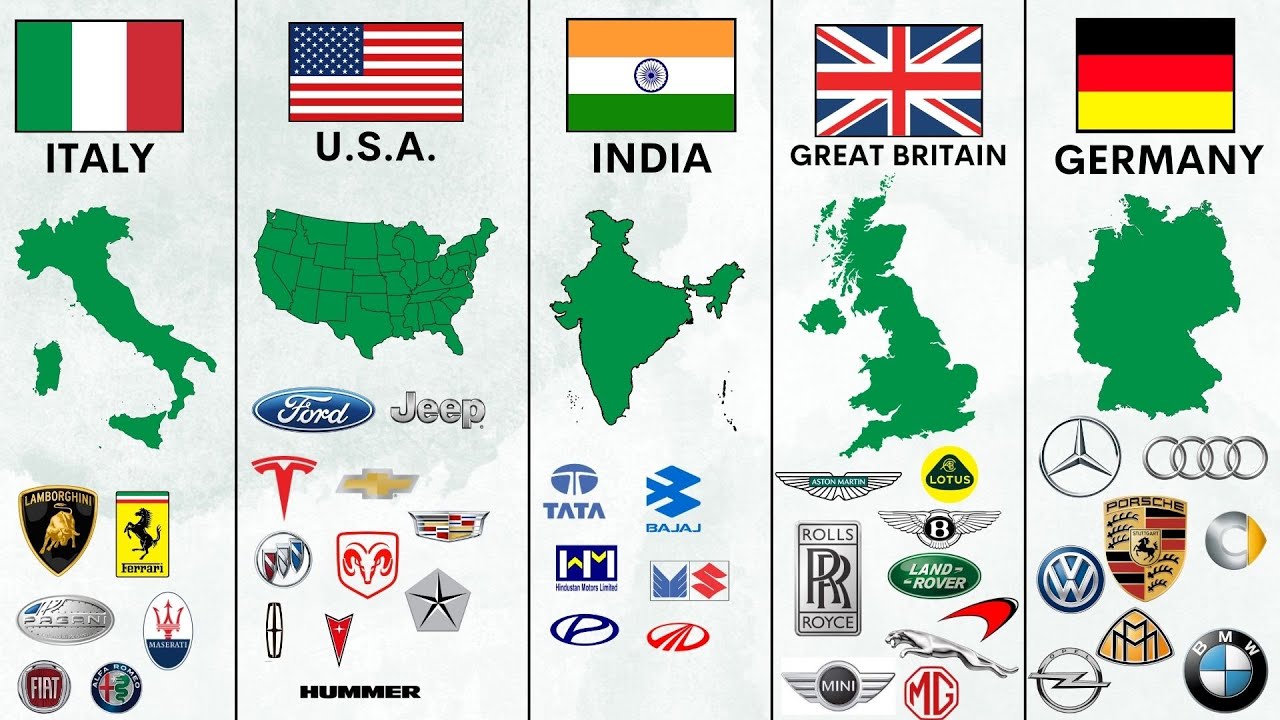The China Factor: Analyzing The Difficulties Faced By Premium Car Brands Like BMW And Porsche

Table of Contents
H2: Intense Competition from Domestic Brands
The Chinese automotive industry has experienced explosive growth, producing sophisticated and increasingly competitive domestic brands. Nio, Xpeng, and BYD, to name a few, are rapidly gaining market share, posing a significant threat to established premium players like BMW and Porsche.
- Lower Prices: Domestic brands often offer comparable features at significantly lower price points, appealing to a price-sensitive segment of the luxury market.
- Tailored Features: Chinese consumers have unique preferences, and domestic brands are adept at incorporating these into their vehicles, offering features and functionalities specifically designed for the local market.
- Strong Government Support: The Chinese government actively supports the development of domestic automakers through subsidies, tax breaks, and infrastructure investments, giving them a competitive edge.
This intense competition significantly impacts the market share of established premium brands, forcing them to adapt and innovate to remain relevant. The days of simply exporting existing models are over; a more nuanced approach is needed to compete effectively.
H2: Navigating Complex Regulatory and Trade Barriers
The Chinese market is known for its complex regulatory landscape. Navigating import tariffs, homologation processes, and stringent emission standards presents a significant challenge for foreign automakers.
- High Import Tariffs: Significant import duties increase the cost of imported vehicles, impacting profitability and making them less competitive against domestically produced alternatives.
- Stringent Homologation: The process of obtaining certification for vehicle sales in China is lengthy and complex, requiring extensive testing and documentation.
- Emissions Standards: China's increasingly stringent emission standards necessitate significant investment in research and development to ensure compliance.
These barriers significantly impact market access and profitability, requiring substantial investment and strategic planning to overcome.
H2: Understanding Evolving Chinese Consumer Preferences
Chinese consumers are discerning and increasingly tech-savvy. Their preferences differ considerably from those in other markets, necessitating a targeted approach to product development and marketing.
- Technological Advancements: Chinese consumers prioritize technologically advanced features, including advanced driver-assistance systems (ADAS), digital connectivity, and infotainment systems.
- Electric Vehicles (EVs): The adoption rate of electric vehicles in China is exceptionally high, putting pressure on premium brands to offer a compelling range of EVs.
- Brand Loyalty: While brand loyalty exists, it’s not as entrenched as in some Western markets; consumers are more open to exploring new brands offering innovative technologies and features.
Understanding and adapting to these evolving preferences is critical for success. Marketing campaigns must resonate with the unique values and aspirations of Chinese consumers.
H2: The Rise of Electric Vehicles (EVs) and Technological Innovation
China is at the forefront of the global EV revolution. Domestic brands are leading the charge, leveraging government support and technological innovation to dominate the market.
- Rapid EV Adoption: The rapid adoption of EVs in China presents both opportunities and challenges for premium brands. They must invest heavily in EV development and infrastructure.
- Charging Infrastructure: The availability of adequate charging infrastructure is crucial for EV adoption, requiring significant investment from both automakers and the government.
- Technological Competition: Chinese EV manufacturers are pushing the boundaries of battery technology, autonomous driving, and connectivity, forcing premium brands to accelerate their innovation efforts.
The pressure to innovate in the EV segment is immense, particularly given the dominance of domestic brands often backed by substantial government support.
H2: The Importance of Localization and Strategic Partnerships
Localization is paramount for success in the Chinese market. Adapting products, marketing strategies, and supply chains to the specific needs of Chinese consumers is essential.
- Product Adaptation: Tailoring vehicle features, specifications, and design to suit local preferences is crucial for market acceptance.
- Localized Marketing: Marketing campaigns need to resonate with the unique cultural context and consumer values within China.
- Strategic Partnerships: Collaborating with local companies can provide access to vital resources, expertise, and market insights.
Establishing strategic partnerships with Chinese companies can significantly enhance market access, reduce costs, and accelerate product development.
3. Conclusion:
The "China Factor" represents a complex interplay of intense competition, intricate regulations, evolving consumer preferences, and the rapid rise of electric vehicles. For premium car brands like BMW and Porsche to succeed, a deep understanding of this multifaceted market is paramount. Adapting to Chinese consumer preferences, navigating regulatory hurdles, and competing effectively with technologically advanced domestic brands are crucial for long-term success. Localization strategies, technological innovation, and strategic partnerships are essential components of a robust China strategy. Understanding the "China Factor" is crucial for any premium car brand aiming for success in the world's largest automotive market. Learn more about effectively navigating the challenges and opportunities presented by the Chinese market and develop a robust strategy to overcome the difficulties presented by the China Factor.

Featured Posts
-
 Spk Nin Kripto Para Piyasalarina Dair Son Aciklamasi Detayli Analiz
May 08, 2025
Spk Nin Kripto Para Piyasalarina Dair Son Aciklamasi Detayli Analiz
May 08, 2025 -
 The End Of The Sonos And Ikea Symfonisk Line Analysis And Alternatives
May 08, 2025
The End Of The Sonos And Ikea Symfonisk Line Analysis And Alternatives
May 08, 2025 -
 India Vs Pakistan Is War Over Kashmir Inevitable Exploring The Historical And Current Tensions
May 08, 2025
India Vs Pakistan Is War Over Kashmir Inevitable Exploring The Historical And Current Tensions
May 08, 2025 -
 New Superman Sneak Peek Hints At Kryptos Betrayal
May 08, 2025
New Superman Sneak Peek Hints At Kryptos Betrayal
May 08, 2025 -
 2 9 4 360
May 08, 2025
2 9 4 360
May 08, 2025
